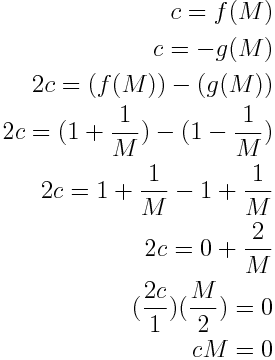doronshadmi
Penultimate Amazing
- Joined
- Mar 15, 2008
- Messages
- 13,320
It is well known that mathematicians avoid diagrams as rigorous mathematical proofs because of optical illusions that may involved with them.
Nevertheless, proof without words is accepted if it
I claim that there are also symbolic illusions that can be discovered if both visual AND symbolic methods are combined in some mathematical work, for example:

In this diagram (where visual AND symbolic methods are involved) 0.111...2 = 1 if only |N| observation of the real-line is used.
By using the same diagram (where visual AND symbolic methods are involved) 0.111...2 < 1 if also |R| observation of the real-line is used.
In this case 0.111...2 < 1 by exactly 0.000...12, where the value 0.000...12 is rigorously analyzed as follows:
The value 0.000...12 acts differently than value 0, as follows:
The ".000..." is used as a |N| size place value keeper that is inaccessible to "...12" that is at |R| size.
----------------------
The following is an example of symbolic illusion (that is discovered by using also |R| observation of the real-line) simply because n = 0 to ∞ is a hands-waving that misses the fact that |N|<|R| (as rigorously given by the diagram above (where visual AND symbolic methods are involved)):
As for n = 0 to ∞, 0.999...10 obviously does not involved with (9/10)*(1/10|N|) simply because |N| is not one of the values of any collection of |N| finite values (and this is exactly the case of the parallel-summation of finite |N| values 0.9+0.09+0.009+... that are based on the convergent sequence of <0.9,0.09,0.009,...> finite |N| values).
Nevertheless, proof without words is accepted if it
(http://en.wikipedia.org/wiki/Proof_without_words)... can be demonstrated as self-evident by a diagram without any accompanying explanatory text.
I claim that there are also symbolic illusions that can be discovered if both visual AND symbolic methods are combined in some mathematical work, for example:

In this diagram (where visual AND symbolic methods are involved) 0.111...2 = 1 if only |N| observation of the real-line is used.
By using the same diagram (where visual AND symbolic methods are involved) 0.111...2 < 1 if also |R| observation of the real-line is used.
In this case 0.111...2 < 1 by exactly 0.000...12, where the value 0.000...12 is rigorously analyzed as follows:
The value 0.000...12 acts differently than value 0, as follows:
The ".000..." is used as a |N| size place value keeper that is inaccessible to "...12" that is at |R| size.
----------------------
The following is an example of symbolic illusion (that is discovered by using also |R| observation of the real-line) simply because n = 0 to ∞ is a hands-waving that misses the fact that |N|<|R| (as rigorously given by the diagram above (where visual AND symbolic methods are involved)):
[qimg]http://i346.photobucket.com/albums/p412/julietrosenthal/9repeatingequal1proof_zps2404921b.png[/qimg]
As for n = 0 to ∞, 0.999...10 obviously does not involved with (9/10)*(1/10|N|) simply because |N| is not one of the values of any collection of |N| finite values (and this is exactly the case of the parallel-summation of finite |N| values 0.9+0.09+0.009+... that are based on the convergent sequence of <0.9,0.09,0.009,...> finite |N| values).
Last edited:

 Awesome!
Awesome!


